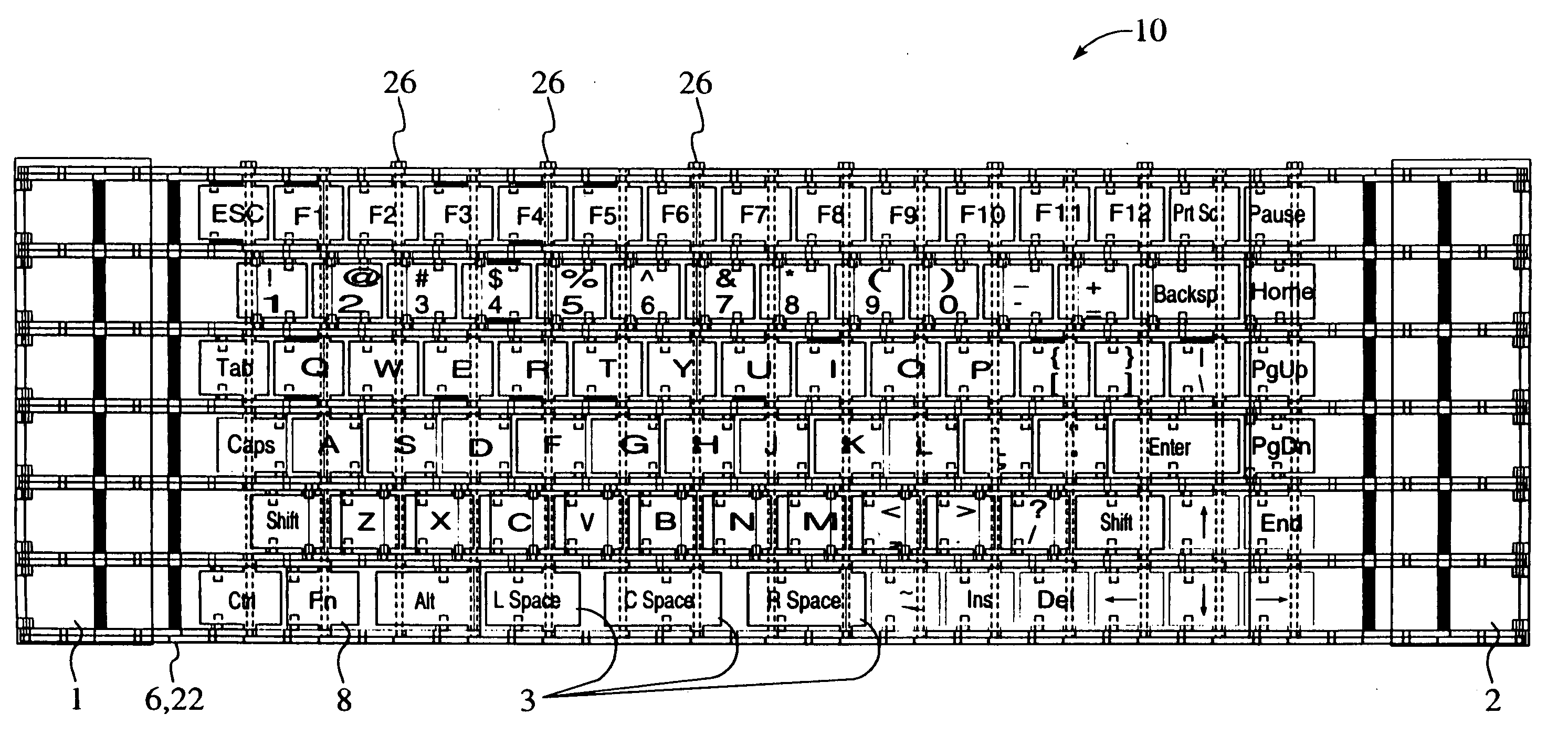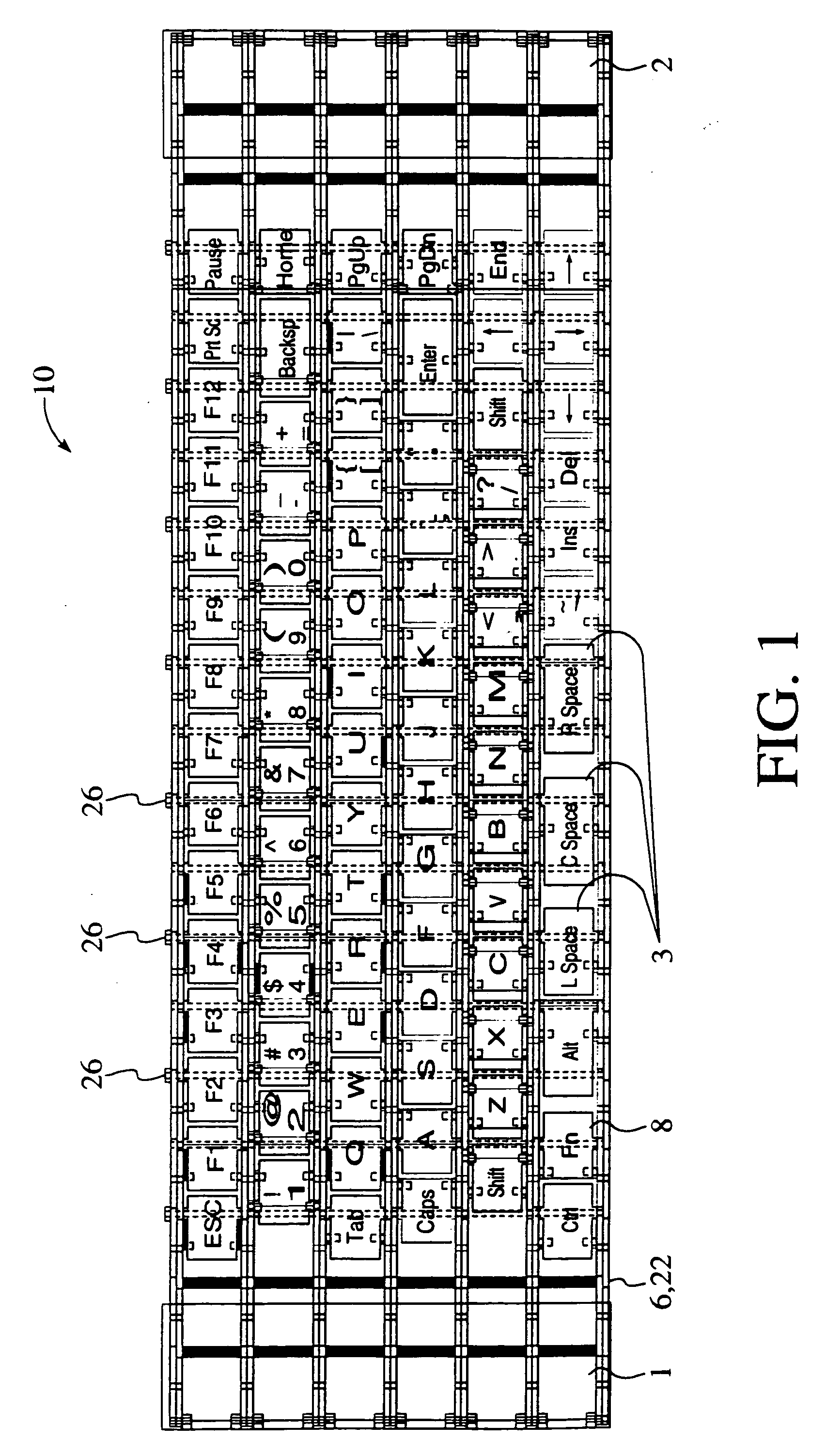System and method for detecting key actuation in a keyboard
a keyboard and key technology, applied in the field of systems and methods for detecting key actuation in keyboards, can solve the problems of inability to detect handwriting, inability to use the keyboard, slow and error-prone miniature keyboards, etc., and achieve the effect of easy collapse of the keyboard assembly
- Summary
- Abstract
- Description
- Claims
- Application Information
AI Technical Summary
Benefits of technology
Problems solved by technology
Method used
Image
Examples
Embodiment Construction
[0084] The invention relates to detecting key actuation in a keyboard assembly. Specific details of an embodiment of the keyboard assembly are described below. Numerous specific details including keyboard layouts, specific structural arrangements and relationships, etc. are presented in order to provide a thorough understanding of the invention. It is to be appreciated that these specific details need not be specifically employed to practice the invention and that there are other details that are not presented so as not to unnecessarily obscure the description of the invention that may be substituted or included that fall within the scope of the claimed invention.
[0085]FIG. 1 shows a planar top view of an embodiment of the keyboard assembly of the invention. For convention, the rows of keys are numbered I through VI, with Row I being closest to the user or the front of the keyboard assembly. Row I includes the “Ctrl” key and row VI includes the “Pause” key. The “front” side of a ke...
PUM
 Login to View More
Login to View More Abstract
Description
Claims
Application Information
 Login to View More
Login to View More - R&D
- Intellectual Property
- Life Sciences
- Materials
- Tech Scout
- Unparalleled Data Quality
- Higher Quality Content
- 60% Fewer Hallucinations
Browse by: Latest US Patents, China's latest patents, Technical Efficacy Thesaurus, Application Domain, Technology Topic, Popular Technical Reports.
© 2025 PatSnap. All rights reserved.Legal|Privacy policy|Modern Slavery Act Transparency Statement|Sitemap|About US| Contact US: help@patsnap.com



